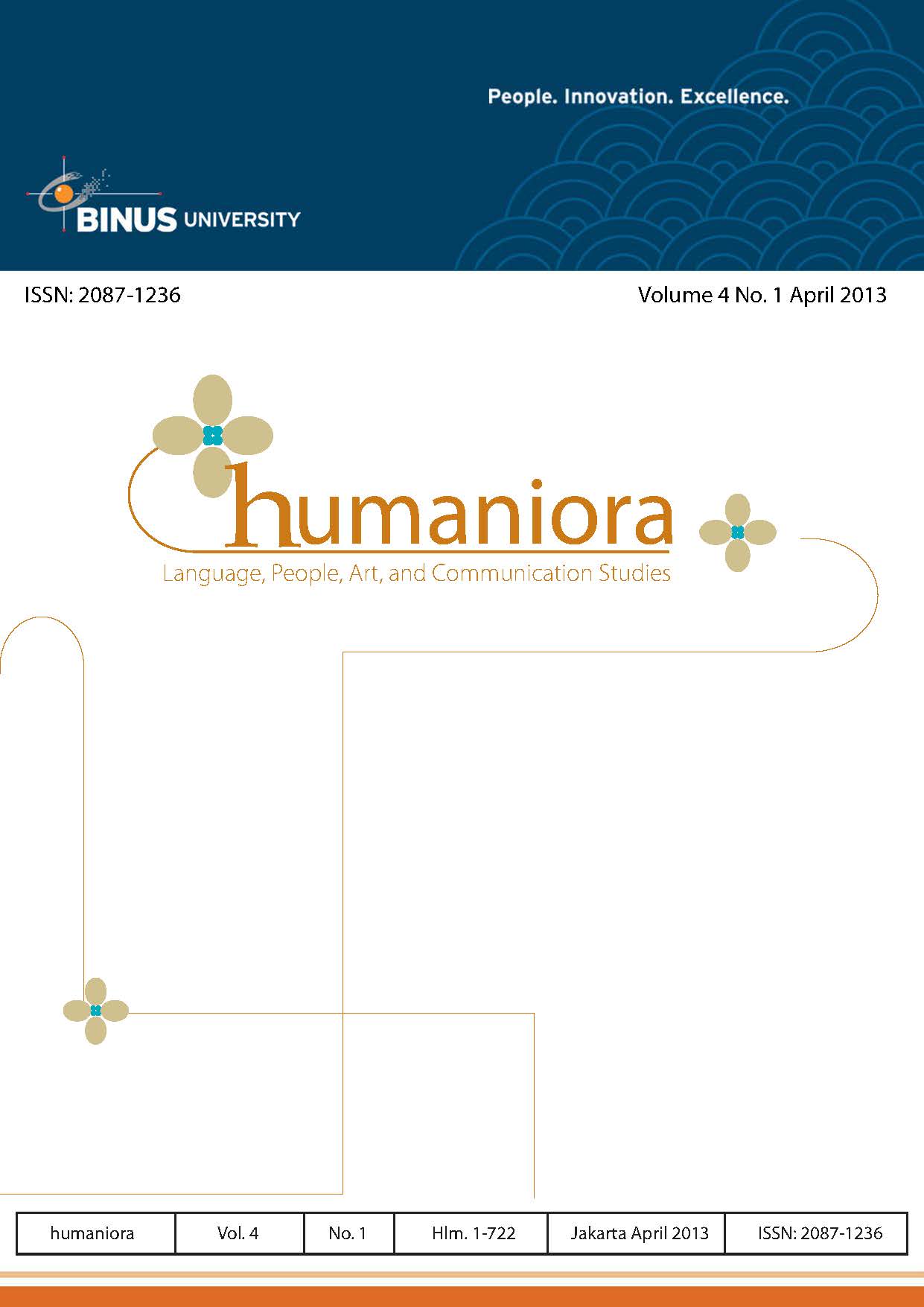Aplikasi Nilai Objektivitas pada Konsep Desain Interior Kantor
DOI:
https://doi.org/10.21512/humaniora.v4i1.3424Keywords:
design concept, office interorAbstract
Now days, planning an office was more than preparing desk and chair, it needed numbers of important decisions to be considerered, such as, where and how did the workers want to work?, What kinds of workspace that supported  employee’s activities and how much did the office use the new technologies. Article would acknowledge the designer about nine objectives that needed to be known before planning an office and six crucial choices about the place and way of working. Moreover, the designer would have the same frame of working with managers to create the success of office facilities. Researcher used library research to compile  data.It is concluded that  manager and designer needs to prioritize and discusses detail such as location, use, layout, appearance, filling and standardization concept to make an office efficient and meet  the employess needs.
Â
References
Infoteli blog contains about architecture and interior design (Juli 2010) “Furniture office designâ€, diakses Desember 2011 melalui <http://www.infoteli.com/flexible-office-furniture-design.htm>
“Modular Office tableâ€,diakses desember 2011 melalui <http://www.homeofficereviews.net/2011/08/30/modular-office-table-2/modular-office-table-3/>
L, Allure Media Pty ( Mei 2007) “Non-open-plan officeâ€, Sydney, diakses desember 2011 melalui <http://www.lifehacker.com.au/2011/02/the-non-open-plan-office/>
Open space office design, Mei 2011, <http://www.homeofficereviews.net/2011/05/27/open-space-office-design/>
“Planning office spaceâ€, (2010) diakses Desember 2011 melalui <http://www.planning-office-spaces.com>
Van meel. J, Martens. Y, Van Ree.H, (2010) “Planning office space a pratical guide for managers and designer, Laurence King publishing, UK.
Downloads
Published
How to Cite
Issue
Section
License
Authors who publish with this journal agree to the following terms:
a. Authors retain copyright and grant the journal right of first publication with the work simultaneously licensed under a Creative Commons Attribution License - Share Alike that allows others to share the work with an acknowledgment of the work's authorship and initial publication in this journal.
b. Authors are able to enter into separate, additional contractual arrangements for the non-exclusive distribution of the journal's published version of the work (e.g., post it to an institutional repository or publish it in a book), with an acknowledgment of its initial publication in this journal.
c. Authors are permitted and encouraged to post their work online (e.g., in institutional repositories or on their website) prior to and during the submission process, as it can lead to productive exchanges, as well as earlier and greater citation of published work.
USER RIGHTS
All articles published Open Access will be immediately and permanently free for everyone to read and download. We are continuously working with our author communities to select the best choice of license options, currently being defined for this journal as follows: Creative Commons Attribution-Share Alike (CC BY-SA)




















